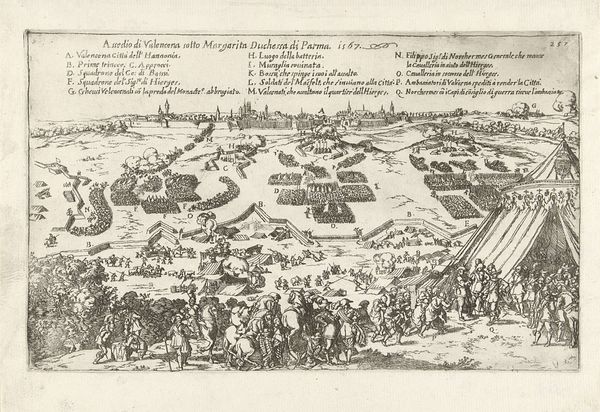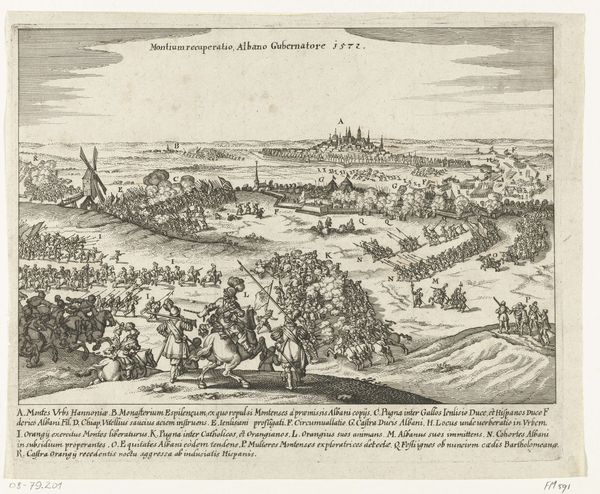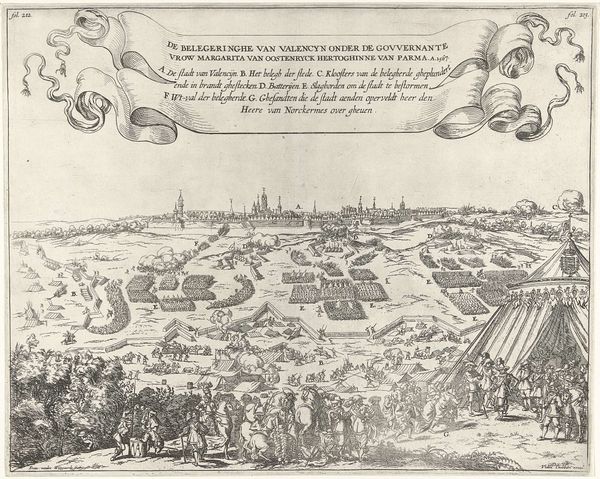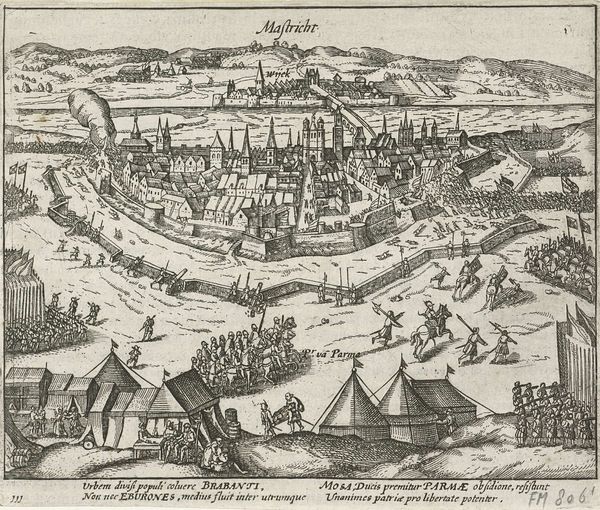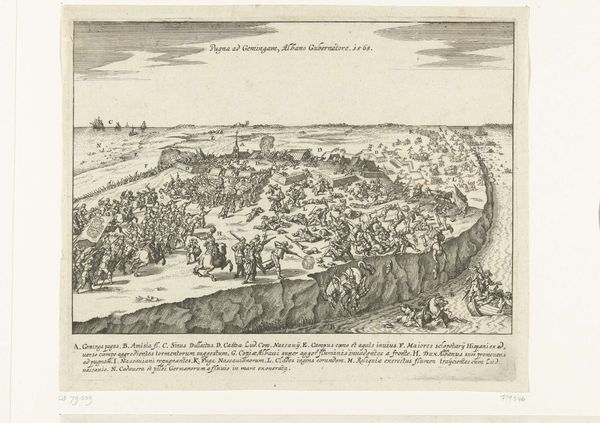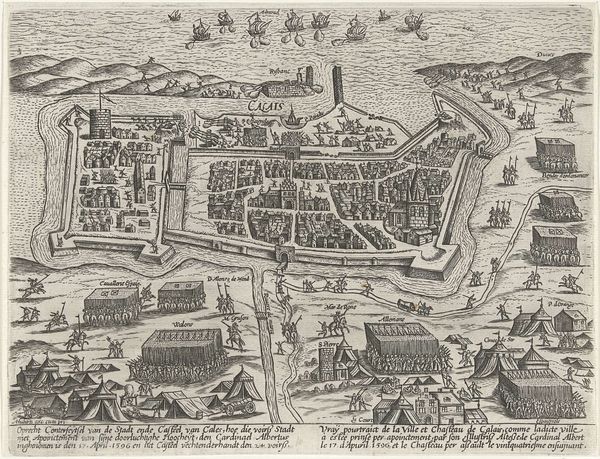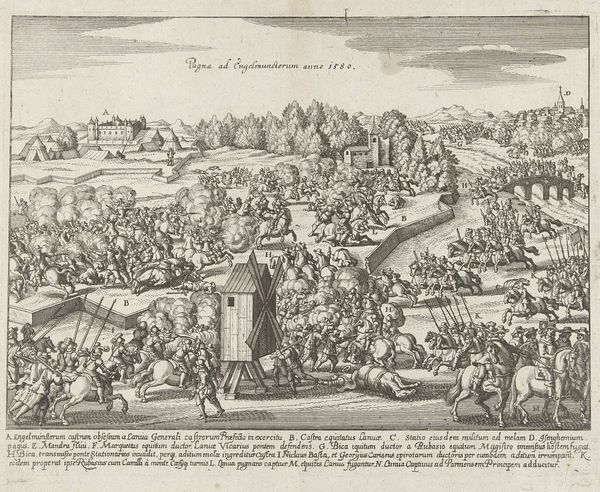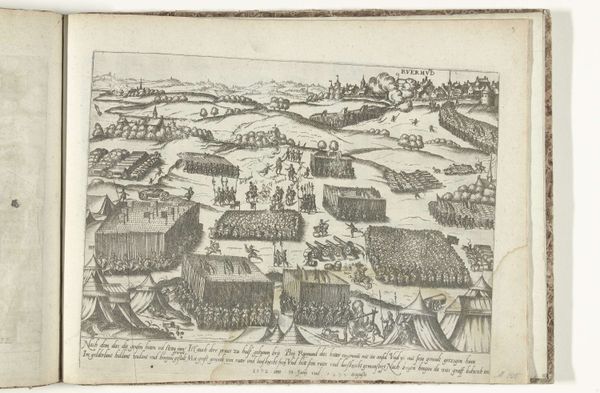
print, engraving
#
baroque
# print
#
landscape
#
line
#
cityscape
#
history-painting
#
engraving
Dimensions: height 219 mm, width 277 mm
Copyright: Rijks Museum: Open Domain
Curator: Before us is an engraving titled "Beleg van Valenciennes, 1567," now held at the Rijksmuseum. While its attributed to an anonymous artist, its estimated creation spans from 1649 to 1651. Editor: It strikes me immediately with its incredible detail, almost like a meticulously rendered map. The sheer number of figures and architectural elements is quite astonishing, considering its size and the engraving medium. It's quite dense with information. Curator: Precisely. The image chronicles the siege of Valenciennes in 1567, a pivotal event during the Dutch Revolt. Notice how the anonymous artist has chosen to depict not just the battle, but also the encampments, fortifications, and even the topography surrounding the city. The piece underscores the power dynamics between Margaret of Parma, who governed the Habsburg Netherlands, and the rebellious city. Editor: Structurally, the composition draws the eye across the landscape. The use of lines to depict such a broad scene creates a remarkable sense of depth. There's almost a sense of ordered chaos, with various groups arranged yet suggesting overall disarray and movement. Curator: Yes, that ordered chaos is quite telling. It speaks to the regimented nature of warfare during this period but also to the inherent instability and violence of conflict. The use of text, those lettered annotations, highlights the engraving’s role as both artwork and historical document. They direct us to key places and persons. Editor: I'm intrigued by the choice to depict this event so long after it occurred. Over seventy years, and rendered in a baroque style. The engraving feels somewhat detached from the actual experience of the siege. Almost a calculated documentation, rather than emotional expression. Curator: Time undoubtedly shifts perspectives. The print would've served as a reminder of past struggles. Moreover, in the mid-17th century, the Dutch Republic was solidifying its identity, so recalling such events reinforced a collective narrative of resistance. Remember also the widespread hunger for topographical prints such as these that blossomed with the genre of landscape printmaking during this era. Editor: Absolutely. This wasn't simply an image, it was a tool for understanding power, land, and resistance. The artist uses line to define the historical narrative, one seemingly rooted in Dutch political identity. Curator: Indeed. Analyzing the engraving provides insight into the complexities of history, memory, and nation-building within the context of early modern Europe. Editor: I’m walking away with a new understanding for how detail itself becomes a language for conveying both specific facts and cultural ideals through art.
Comments
No comments
Be the first to comment and join the conversation on the ultimate creative platform.
